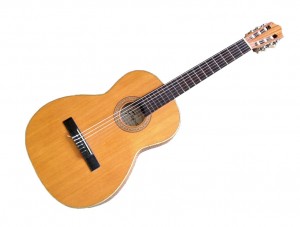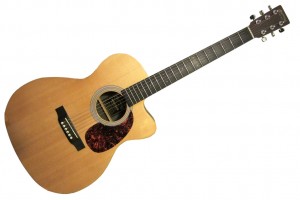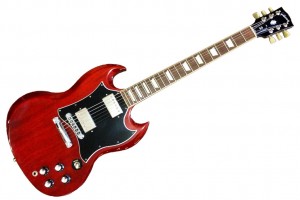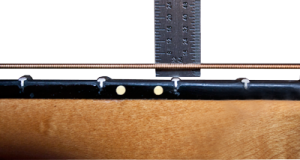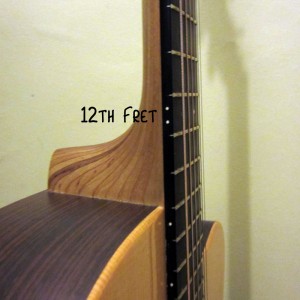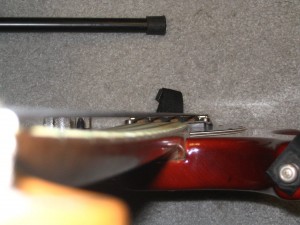Buying a Beginners Guitar
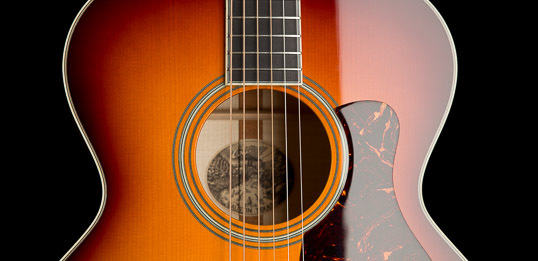
So you’ve decided you want to learn the guitar but haven’t got yourself an instrument. With so many guitar brands and models to choose when you walk into your average guitar shop it’s easy to be overwhelmed.
To help you make the right choice as a beginner it’s highly recommend to bring along a guitar playing friend or relative when you go guitar shopping. Their guitar playing experience they should be able to help you make a good choice and give you an idea of what a good guitar feels and sounds like. Generally new guitars are OK with no problems and ready to play but if buying a 2nd hand guitar this article will help you to avoid buying a bad instrument.
If you don’t know any guitar players this article should help you when buying your first guitar. Ask the salesperson in the shop about the points below and if they are a good salesperson they should help you with each.
The first question to ask yourself is what sort of guitar do you want to buy?
There are 3 main types of guitar each with their own pros and cons for beginners.
Nylon String Acoustic Guitars (Classical)
The nylon string or classical guitar is traditionally used in classical, flamenco and folk music. The sound of this guitar is more mellow and rounded than a steel string acoustic and tends to sound better played with the finger tips verses being played with a pick.
The advantages for beginners is that on the nylon string guitar it’s much easier on the fingers than steel strings as nylon is a much softer material than steel. Also the cost of a reasonable quality nylon string acoustic guitar is cheaper than an equivalent quality steel string guitar.
Steel String Acoustic Guitars
Steel string acoustic guitars are used in rock, country, blues and also in folk music. The sound of this guitar is much brighter and louder than a nylon string acoustic and generally is more suited to strumming or playing with a guitar pick than the nylon string guitar.
One disadvantage for beginners on the steel string guitar is that it’s tougher on the fingers with the steel strings being much less forgiving on fingertips than nylon. It can take a few weeks of daily practice to develop calluses on your finger tips to help reduce the initial pain of playing a steel string acoustic. Also the cost of a reasonable quality steel string acoustic guitar an equivalent quality nylon string guitar.
However for most pop/rock players this is the guitar they will eventually choose as it suits this style of music better than a nylon string guitar. Also many steel string guitars come with a built in pickup allowing them to be plugged into guitar amplifiers and PAs for more volume when performing or playing with bands etc.
Electric Guitars
Electric guitars work through the vibrations of the steel strings being transmitted from the pickups on the instrument to a guitar amplifier (amp) creating the sound. This allows for electric guitars to be much louder with their volume only being limited by the power or size of the amp. Electric guitars often use effects like distortion for longer sustain.
While also using steel strings electric guitars are easier to play than steel string acoustics as the string gauge (thickness) is lighter which allows guitarists to more easily bend the strings in guitar solos which is essential for playing blues and most modern rock guitar.
However beginners who start on electric can find it difficult to move onto a steel string acoustic as it does require more strength in the fingers to play individual notes and in particular barre chords. Due to this it is best recommended to start on a steel string acoustic and then move over to electric guitar as this change is much easier.
Also keep in mind that if you’re buying your first electric guitar you will also need to buy a guitar amp to be able to hear it! A basic 5-20 Watt amp is good enough for practicing at home.
The following checklist can be used to check when buying all 3 main types of guitars. This will save you from buying a bad instrument.
Check the Action
This is how high the strings are off the fretboard. A high action means that the strings are far away from the fretboard around the 12th fret (halfway down the neck where the double dots are) while low action means that the strings are close to the fretboard. Generally the lower the action easier a guitar is to play especially when you begin playing up the neck around the 12th fret.
Sometimes though the action can be too low and stings can buzz on the frets and cause dead spots where certain notes or chords don’t ring out. As a guide the distance between the fretboard and string at the 12 fret should be about 3/32″ to 7/64″ (2.4-2.8 millimetres). Action can be adjusted on most guitars but it is easier to do this on electric and steel string acoustic guitars.
Check the Intonation
A guitar has good intonation if it stays in tune when you play notes and chords higher up the neck. Most new guitars should have good intonation but sometimes older 2nd hand or cheaper guitars can have intonation problems. To test a guitars intonation get your guitar playing friend or salesperson to play chords high up the neck such as an E bar chord on the 7th fret and check that it sounds in tune as it did lower down the neck.
Another way to check the intonation is to use an electronic tuner to check that the tuning of the notes on the 12th fret are the same as the open string. For example an open E string is also plays an E note at the 12th fret. If the tuner shows that the open string is in tune but out of tune at the 12th fret the intonation needs to be fixed. This can be relatively easily fixed on some types of electric guitars but can more difficult to remedy on acoustic guitars.
Check How it Sounds
For an acoustic guitar get your friend or the salesperson to play a few different models around the same price you should be able to hear that certain guitars will sound fuller or brighter. Pick the one that sounds best to you.
For an electric guitar get your friend or salesperson to play a range of guitars through an amp (preferably an amp similar to one you will be buying) with the same settings for each guitar. Listen for the differences in volume and tone between each guitar. Sometimes cheaper instruments use cheaper pickups with a lower output resulting in a lower volume or they may hum or buzz slightly depending on quality. Keep in mind that cheap pickups can sometimes be changed for better quality ones.
Also when buying 2nd hand guitars whether electric or acoustic listen for any strange buzzes or rattles as the guitar may have loose parts or been damaged in the past. Some things can be fixed such as a loose screw but if in doubt it may be safer to look at another guitar.
How Does it Feel
Even if you haven’t played a guitar before have a go at holding the guitar in a sitting position whether it be electric or acoustic. There are may shapes and sizes of guitars within the steel string acoustic and electric range and certain types will feel more comfortable to you depending on your own body shape and size. For small kids I’d recommend a smaller 3/4 size guitar.
Check for Twists or Bends in the Neck
For 2nd hand guitars also check the neck to ensure it is not warped or twisted. Sometimes guitars that have been left outdoors or in a car on hot day can have the wood of the neck damaged. Have a look down the neck to check that it’s straight and flat. If it is warped there’s not much that can be done to fix it so its best to look for another guitar.
So now you have some guitar buying knowledge it’s time to go shopping for more confident in what you you’re looking for
